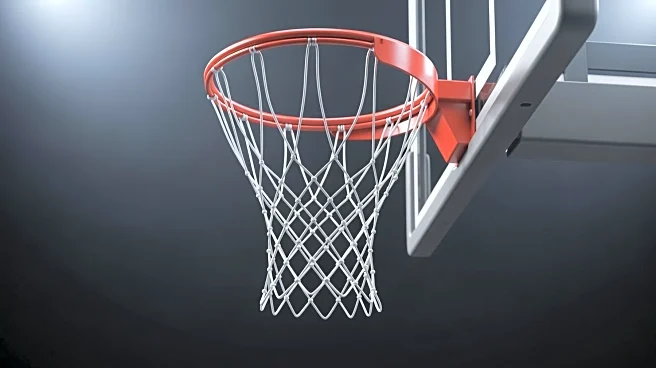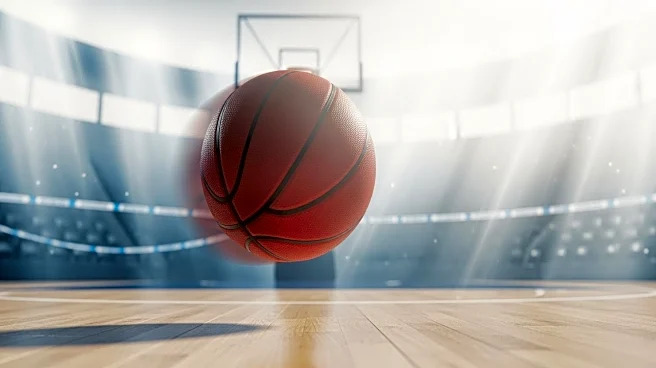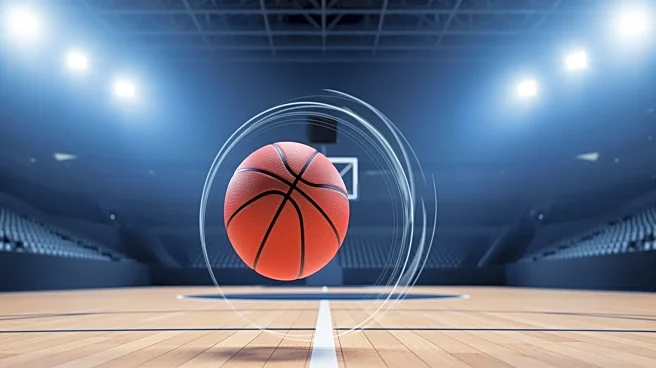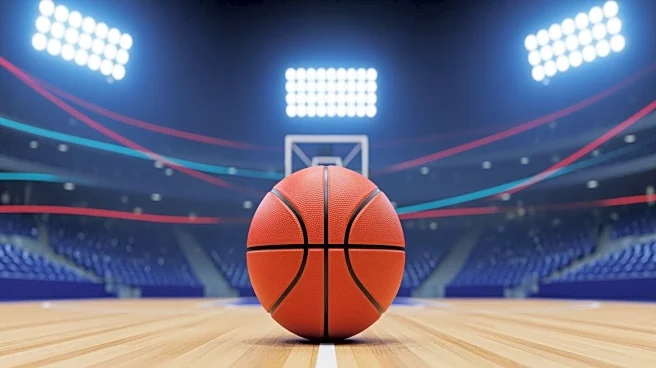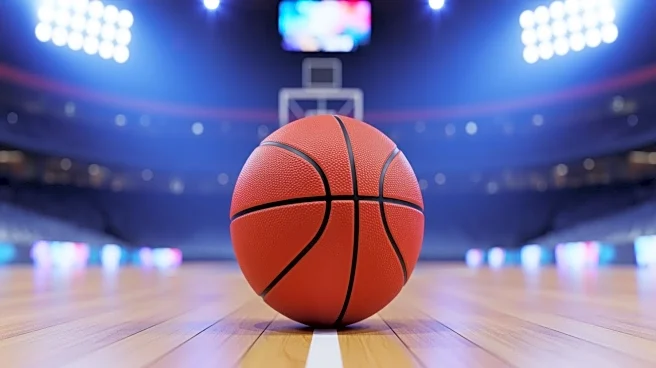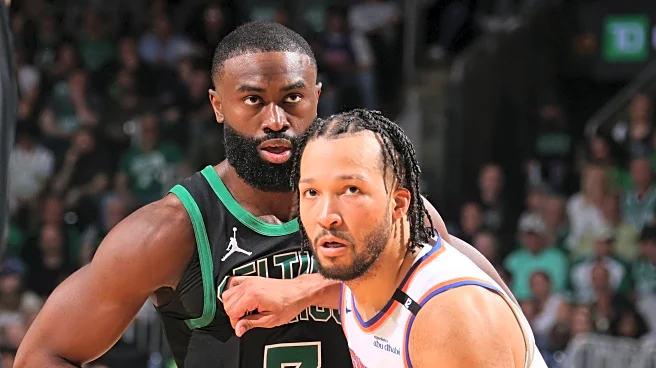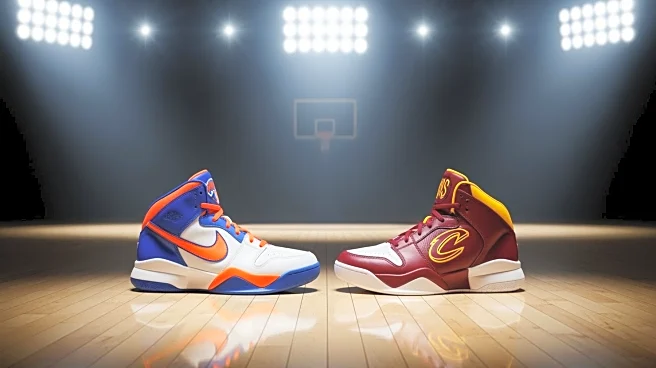What's Happening?
Josh Hart made a notable impact in the New York Knicks' season opener against the Boston Celtics, despite facing challenges with his shooting. Hart, who has been dealing with back stiffness, played a crucial
role in the Knicks' 105-95 victory by securing a game-high 14 rebounds in just 19 minutes off the bench. His performance was highlighted by his defensive efforts, earning praise from coach Mike Brown, who described Hart as a 'monster' on the glass. Hart wore a splint on his surgically repaired ring finger, which he aggravated and may require further surgery after the season. Despite shooting 1-for-8 from the field, Hart contributed significantly through his defensive plays and rebounding.
Why It's Important?
Josh Hart's performance underscores the importance of defensive contributions in basketball, particularly in games where offensive output may be lacking. His ability to dominate the boards and provide defensive pressure was instrumental in the Knicks' victory, showcasing the value of effort and hustle in team sports. This game highlights Hart's resilience and adaptability, as he managed to make a significant impact despite physical setbacks. For the Knicks, Hart's defensive prowess adds depth to their roster, potentially influencing their strategy and performance in upcoming games.
What's Next?
As the season progresses, Josh Hart will continue to focus on improving his conditioning and adapting to coach Mike Brown's system, which he is still learning due to limited preseason play. The Knicks will likely rely on Hart's defensive skills in future matchups, especially as he recovers from his finger injury. Monitoring his health and performance will be crucial for the team, as they aim to build on their opening victory and maintain momentum throughout the season.
Beyond the Headlines
Josh Hart's situation highlights the challenges athletes face in balancing recovery from injuries with competitive performance. His decision to play through discomfort and potentially delay surgery reflects the pressures and expectations in professional sports. This scenario also raises questions about player health management and the long-term implications of playing through injuries, which are critical considerations for teams and medical staff.
